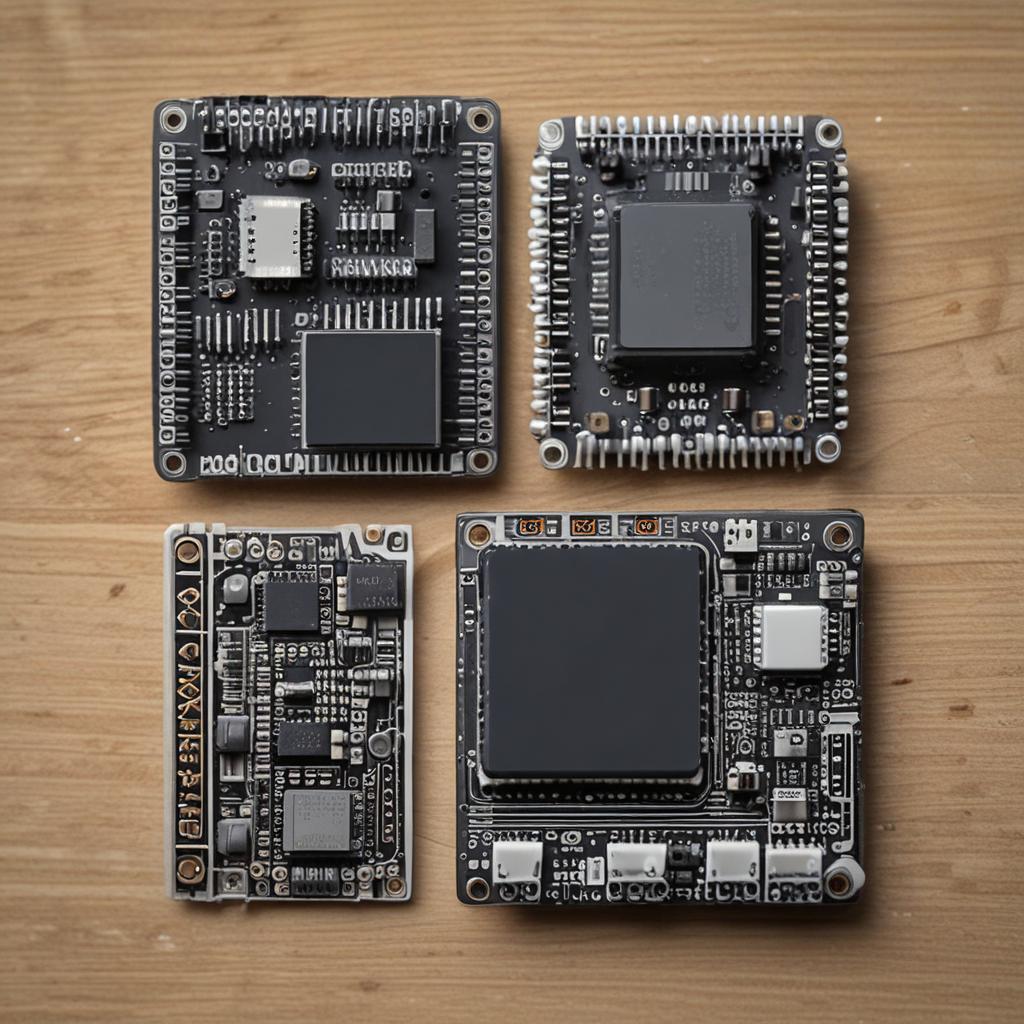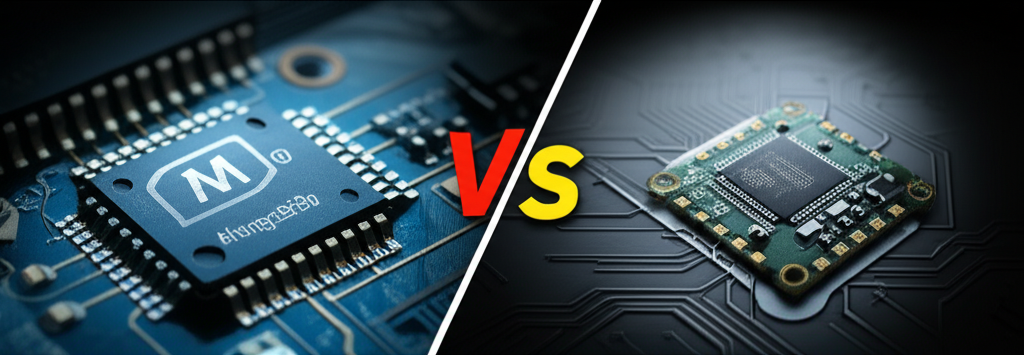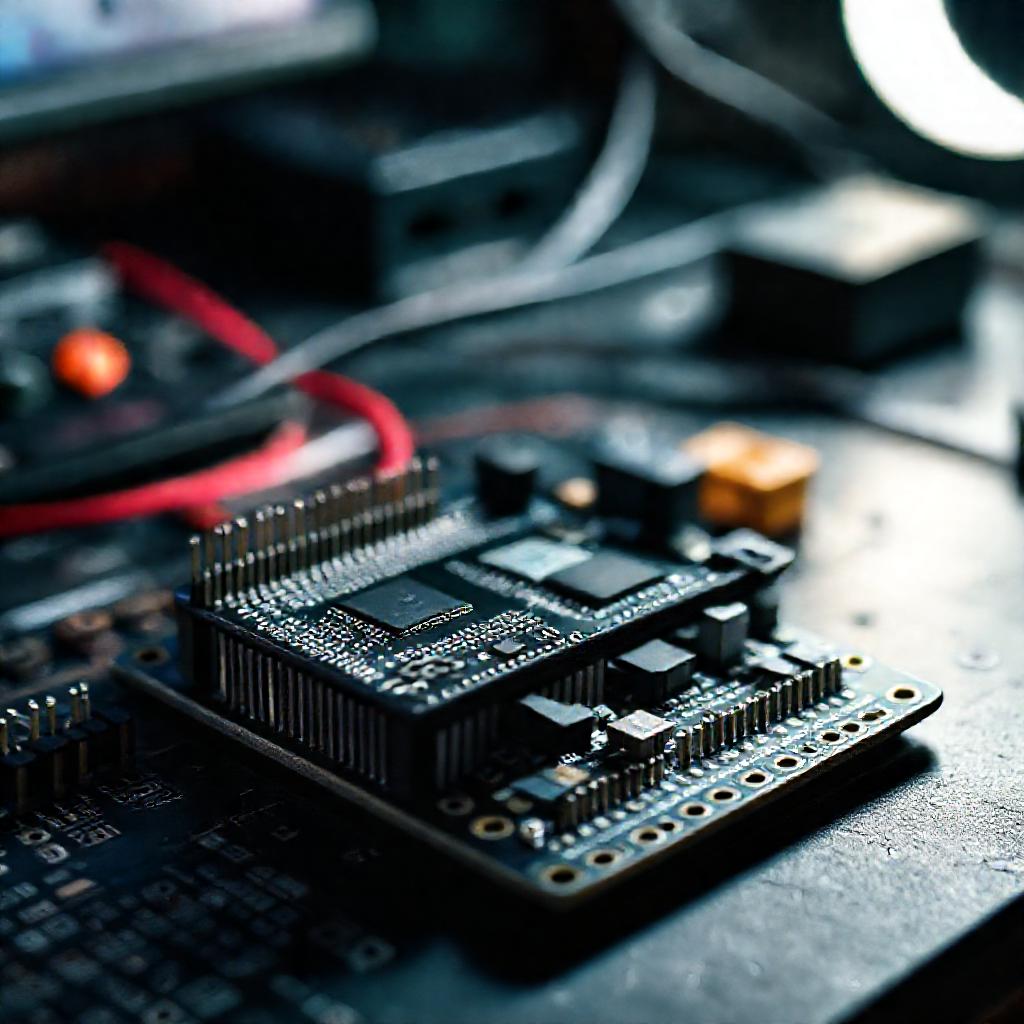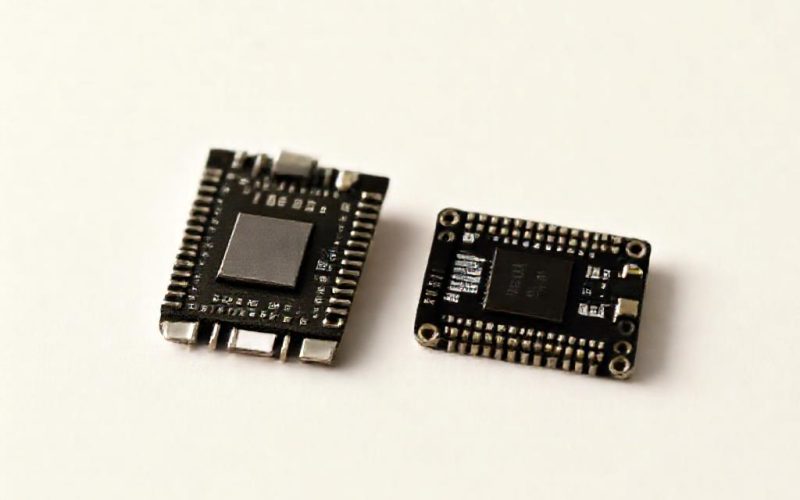Table of Contents Show
The world of microcontrollers powers everything from simple DIY gadgets to complex industrial systems, offering endless possibilities for innovation. Among the many options available, two stand out for their popularity and versatility: the ATmega328P and the ESP32. While both are widely used in hobbyist and professional projects, they cater to very different needs and applications. Whether you’re building a basic sensor circuit or a connected smart device, understanding the strengths and limitations of each microcontroller is crucial. In this article, we’ll explore the key differences between the ATmega328P and the ESP32, helping you make an informed decision based on your project requirements.
Historical Timeline
2008
Atmega328p introduced by Atmel, widely used in Arduino
2016
ESP32 released by Espressif Systems, integrates Wi-Fi and Bluetooth
2018
ESP32 gains popularity in IoT projects for connectivity
2022
Increased adoption of ESP32 in commercial and industrial applications
2025
Phase of advanced integration and AI capabilities in microcontrollers
Timeline infographic for Atmega328p Vs Esp32 – Which Microcontroller Should You Choose?
Introduction to Microcontrollers
The world of microcontrollers is vast and varied, with numerous options available for different projects and applications. Two popular microcontrollers are the ATmega328P and the ESP32. In this post, we will delve into the details of both microcontrollers, comparing their features, capabilities, and use cases to help you decide which one is best suited for your needs.

Overview of ATmega328P
The ATmega328P is a single-chip microcontroller developed by Atmel, now part of Microchip Technology. It has become one of the most widely recognized microcontrollers due to its use in the Arduino Uno, a board that has introduced countless hobbyists and students to electronics and programming. Built on an 8-bit AVR architecture, the ATmega328P is known for its reliability, simplicity, and ease of use. It’s commonly used in standalone embedded systems where real-time control and low power consumption are essential.
Key Features of ATmega328P
The ATmega328P runs at a clock speed of 16 MHz and features 32 KB of flash memory, with 2 KB reserved for the bootloader, and 2 KB of SRAM. It includes 23 programmable input/output lines, six of which can provide PWM output. Communication interfaces include UART, SPI, and I2C, enabling connectivity with sensors, displays, and other peripherals. Despite its modest specs by modern standards, its deterministic performance and low latency make it ideal for time-critical applications. The microcontroller operates at 5V logic levels, which simplifies interfacing with many legacy components.
Projects Suitable for ATmega328P
The ATmega328P excels in simple, reliable applications where wireless connectivity isn’t required. It’s a go-to choice for beginner robotics, such as line-following or obstacle-avoiding robots, and for basic home automation systems like automatic lighting or temperature monitoring. Educational kits and STEM projects often use this chip due to its straightforward programming environment and compatibility with the Arduino IDE. While it lacks built-in wireless capabilities, it can still be expanded using external modules like the HC-05 Bluetooth or NRF24L01 radio. However, its limited memory and processing power make it unsuitable for data-intensive or network-heavy tasks.

Overview of ESP32
The ESP32, developed by Espressif Systems, is a highly integrated, low-cost microcontroller designed with the Internet of Things (IoT) in mind. It combines a powerful dual-core processor with built-in Wi-Fi and Bluetooth (including Bluetooth Low Energy), making it a versatile solution for connected devices. Since its release, the ESP32 has become a favorite among makers and professionals alike for projects requiring internet connectivity, remote control, or cloud integration. Its compact design and rich feature set have driven widespread adoption in smart home devices, wearables, and industrial monitoring systems.
Key Features of ESP32
The ESP32 is equipped with a dual-core Tensilica LX6 microprocessor that can run at up to 240 MHz, offering significantly more processing power than the ATmega328P. It comes with 4 MB of flash memory and 520 KB of SRAM as standard on most development boards, allowing for more complex code and data handling. It supports a wide range of peripherals, including capacitive touch sensors, multiple UART, SPI, and I2C interfaces, ADCs, DACs, and even an integrated Hall sensor. Its wireless capabilities enable seamless integration into Wi-Fi networks and Bluetooth communication, making it ideal for remote monitoring and control applications.
Projects Suitable for ESP32
The ESP32 is perfect for advanced projects that demand internet connectivity and real-time data processing. Examples include smart thermostats that report temperature to a mobile app, Wi-Fi-enabled security cameras, weather stations that upload data to cloud services like ThingSpeak, and IoT-based irrigation systems. Its dual-core architecture allows one core to handle network communication while the other manages sensors or user input, improving efficiency and responsiveness. Wearable fitness trackers, voice-controlled home assistants, and industrial sensor gateways also benefit from the ESP32’s processing power and wireless integration. Even without using Wi-Fi or Bluetooth, its superior specs make it a strong candidate for computationally intensive standalone applications.

Comparison of ATmega328P and ESP32
Technical Comparison
- Architecture: ATmega328P uses an 8-bit AVR core; ESP32 features a 32-bit dual-core Xtensa LX6 processor.
- Clock Speed: ATmega328P runs at 16 MHz; ESP32 supports up to 240 MHz.
- Flash Memory: 32 KB (ATmega328P) vs. 4 MB (typical on ESP32 boards).
- RAM: 2 KB (ATmega328P) vs. 520 KB (ESP32).
- Wireless Connectivity: ATmega328P has none; ESP32 includes Wi-Fi and Bluetooth/BLE.
- I/O Pins: ATmega328P offers 14 digital I/Os (6 with PWM); ESP32 provides up to 34 GPIOs with multiple functions.
- Power Consumption: ATmega328P excels in ultra-low-power modes; ESP32 consumes more but has configurable sleep modes.
- Development Environment: Both support Arduino IDE, but ESP32 also works with ESP-IDF, MicroPython, and other frameworks.
Practical Considerations
Choosing between the ATmega328P and the ESP32 depends largely on your project’s complexity and goals. If you’re building a simple, battery-powered device that doesn’t need internet access—like a digital thermometer or a basic robot—the ATmega328P is cost-effective, energy-efficient, and easy to deploy. On the other hand, if your project involves sending data to the cloud, connecting to a smartphone, or handling multiple sensors and tasks simultaneously, the ESP32 is the better choice. Budget is another factor: while the ATmega328P is cheaper, the added value of integrated Wi-Fi and greater processing power often makes the ESP32 worth the investment. Additionally, consider community support and available libraries—both platforms are well-documented, but the ESP32’s ecosystem continues to grow rapidly.
Conclusion
The ATmega328P and the ESP32 each have distinct roles in the world of embedded development. The ATmega328P remains a reliable, beginner-friendly option for simple, deterministic control tasks and is ideal for those taking their first steps in electronics. Meanwhile, the ESP32 shines in modern, connected applications, offering robust performance and seamless wireless integration. Your choice should align with your project’s requirements: go with the ATmega328P for simplicity, low cost, and low power usage, or choose the ESP32 when you need speed, memory, and connectivity. By understanding the strengths of each, you can select the right tool to bring your ideas to life efficiently and effectively.




